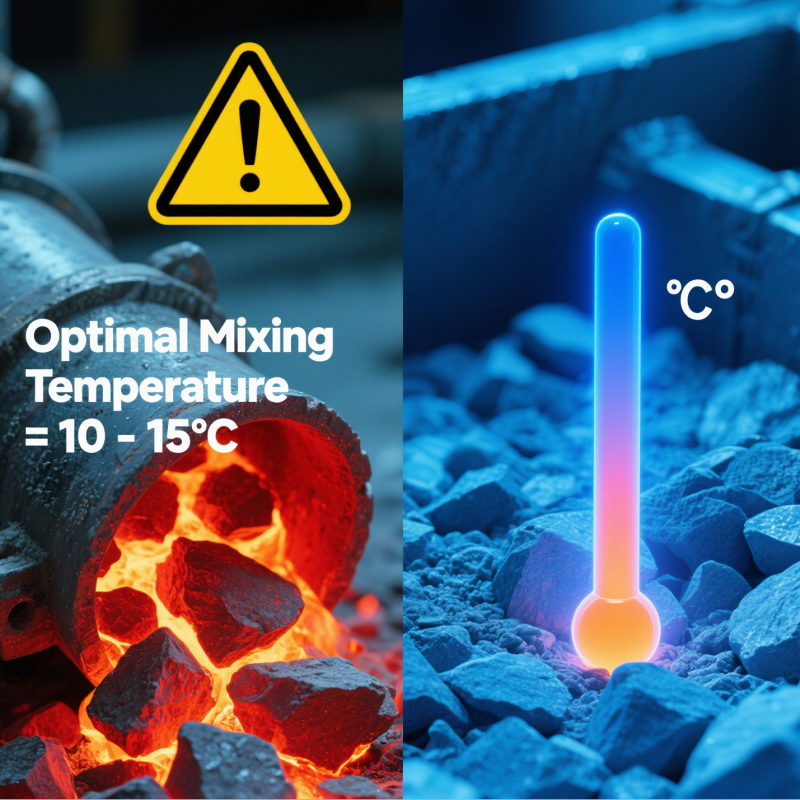
search
Concrete is the backbone of modern construction, used in everything from skyscrapers to bridges and highways. However, producing high-quality concrete requires precision, especially when it comes to temperature control. This is where an aggregate cooling system comes into play. In this blog, we’ll explore what an aggregate cooling system is, why it's essential, and how it can revolutionize concrete production.
Concrete production is a delicate process where every variable matters, and temperature is one of the most critical factors. When concrete is mixed at high temperatures, it can lead to rapid hydration of cement, resulting in reduced strength, cracking, and poor durability. This is especially problematic in hot climates or during summer months when ambient temperatures can soar.
To combat these challenges, maintaining the right temperature of aggregates (sand, gravel, and crushed stone) is essential. Aggregates make up 60-75% of the total volume of concrete, and their temperature directly impacts the overall mix. This is where an aggregate cooling system becomes a game-changer.
An aggregate cooling system is a specialized technology designed to lower the temperature of aggregates before they are mixed with cement and water. By cooling the aggregates, the system ensures that the concrete mix remains within the desired temperature range, even in extreme weather conditions.
Aggregate cooling systems typically use chilled air or water to cool the aggregates stored in silos or bins. The cooling process is efficient, energy-saving, and ensures uniform temperature control. Unlike traditional methods like adding ice or chilled water to the mix, aggregate cooling systems address the root cause—hot aggregates—making them a more effective solution.

Temperature-controlled aggregates result in a more consistent and durable concrete mix. By preventing rapid hydration, the system ensures that the concrete achieves its intended strength and longevity. This is particularly important for large-scale infrastructure projects where quality cannot be compromised.
While traditional cooling methods like adding ice or chilled water may seem cheaper initially, they often lead to higher operational costs in the long run. Aggregate cooling systems, on the other hand, are more efficient and reduce the need for additional cooling measures, saving money over time.
Aggregate cooling systems are designed to minimize energy consumption. By targeting the aggregates directly, they eliminate the need for excessive cooling of the entire concrete mix, making them an eco-friendly option.
In addition to energy savings, these systems reduce water consumption, which is a significant advantage in regions facing water scarcity. By using less water and energy, aggregate cooling systems contribute to sustainable construction practices.
For projects requiring large volumes of concrete, consistency is key. Aggregate cooling systems ensure that every batch of concrete meets the same quality standards, reducing the risk of defects and delays.
Aggregate cooling systems are widely used in industries and projects where temperature-controlled concrete is essential. Some common applications include:
Large-Scale Infrastructure Projects: Bridges, dams, and highways.
High-Rise Buildings: Skyscrapers and commercial complexes.
Precast Concrete Production: Factories producing precast concrete elements.
Hot Climate Construction: Projects in regions with high ambient temperatures.
For example, in the construction of a dam in a tropical region, an aggregate cooling system can ensure that the concrete remains stable and durable despite the extreme heat.
Selecting the right aggregate cooling system depends on several factors:
Project Size: Larger projects may require more advanced systems with higher cooling capacities.
Climate Conditions: Systems should be tailored to the specific temperature challenges of the project location.
Budget: While aggregate cooling systems are cost-effective in the long run, initial investment costs should align with your budget.
Supplier Reliability: Choose a reputable supplier with a proven track record in providing high-quality cooling systems.
By considering these factors, you can ensure that your investment in an aggregate cooling system delivers maximum value.
In a recent infrastructure project in the Middle East, where temperatures often exceed 40°C (104°F), an aggregate cooling system was implemented to produce high-quality concrete. The system reduced aggregate temperatures by 15°C, ensuring consistent concrete quality and preventing cracking. This not only improved the project timeline but also saved significant costs on repairs and maintenance.
In today's construction landscape, where quality, efficiency, and sustainability are paramount, aggregate cooling systems have become indispensable. They address the critical issue of temperature control, ensuring that concrete production meets the highest standards, even in challenging conditions.
Whether you're working on a high-rise building, a dam, or a highway, investing in an aggregate cooling system can significantly enhance your project's success.
If you’re looking to improve the quality, efficiency, and sustainability of your concrete production, an aggregate cooling system is the solution you need. At FSE, we pride ourselves on being a trusted concrete production solution provider, offering cutting-edge technologies and tailored solutions to meet the unique needs of your projects.
With years of expertise and a commitment to excellence, FSE can help you implement the right aggregate cooling system to ensure consistent, high-quality concrete production, even in the most challenging conditions. Contact us today to learn more about how our solutions can benefit your projects. Let’s build a stronger, more sustainable future together!
Q: How does an aggregate cooling system differ from using ice in concrete production?
A: While ice cools the entire concrete mix, an aggregate cooling system targets the aggregates directly, making it more efficient and cost-effective.
Q: Are aggregate cooling systems suitable for small projects?
A: Yes, aggregate cooling systems can be scaled to suit projects of all sizes, though they are particularly beneficial for large-scale operations.
Q: Can aggregate cooling systems be used in cold climates?
A: Yes, they can be used in cold climates to maintain consistent aggregate temperatures, ensuring uniform concrete quality.
By following this comprehensive guide, you can harness the full potential of aggregate cooling systems to elevate your concrete production process.